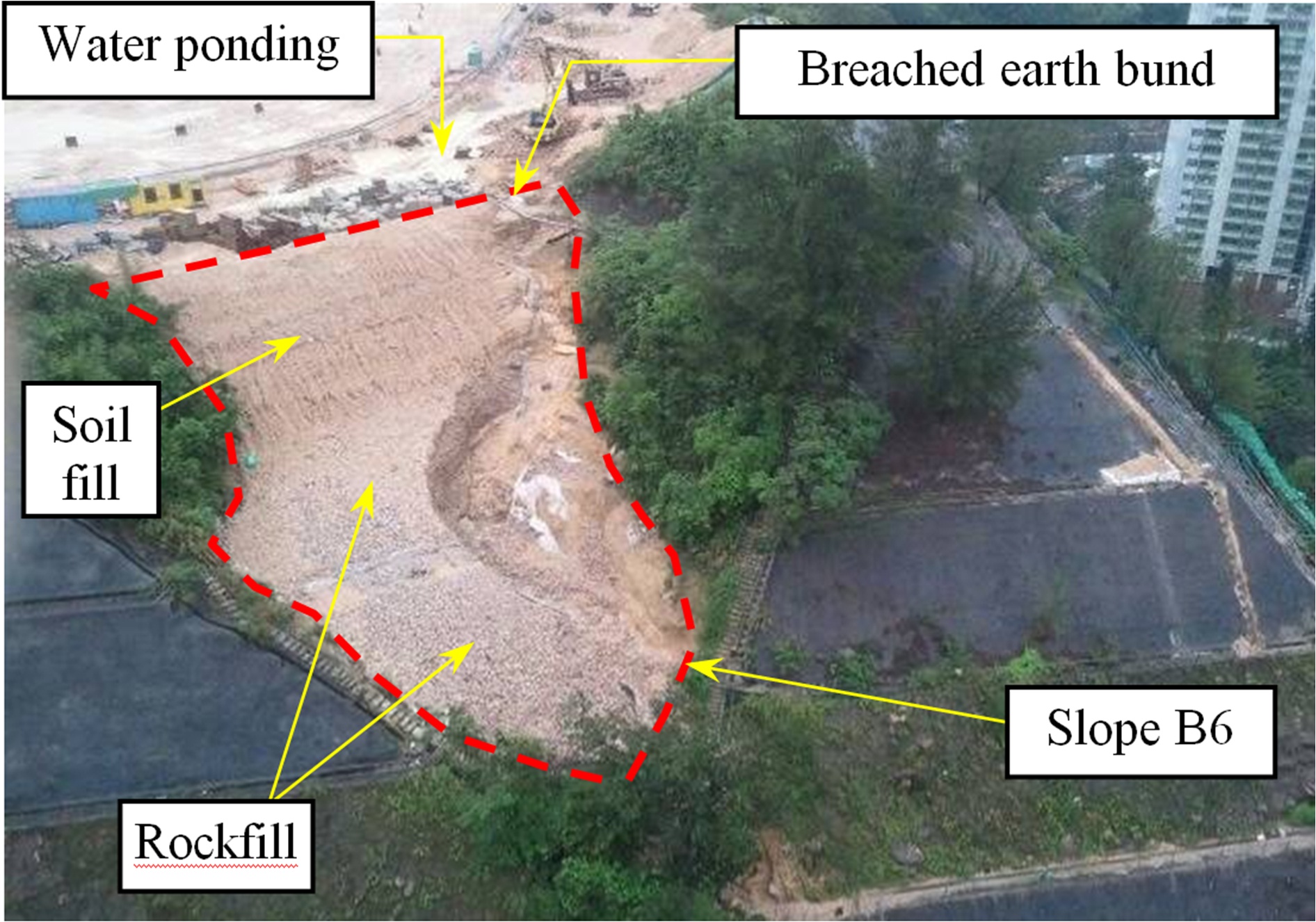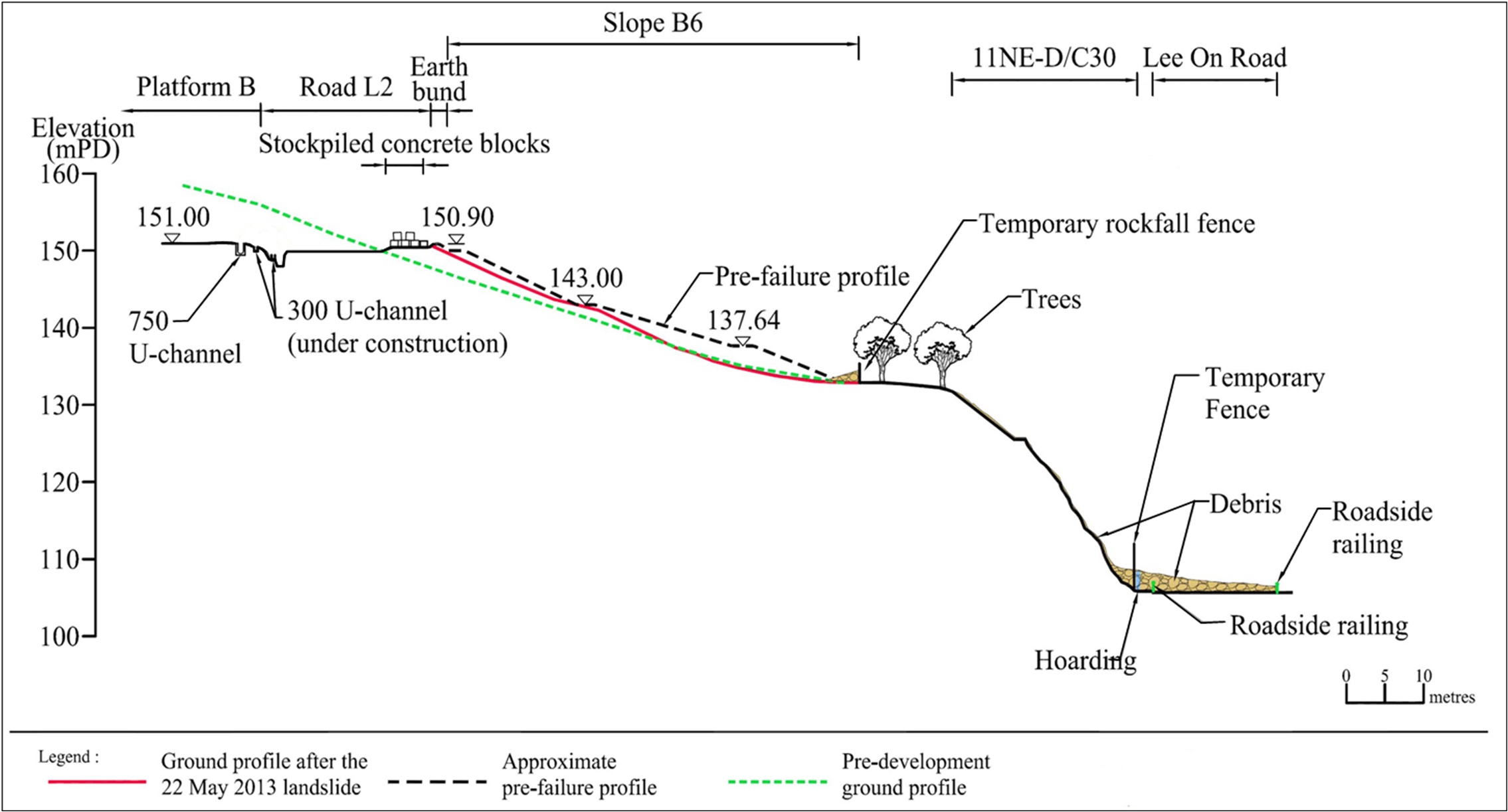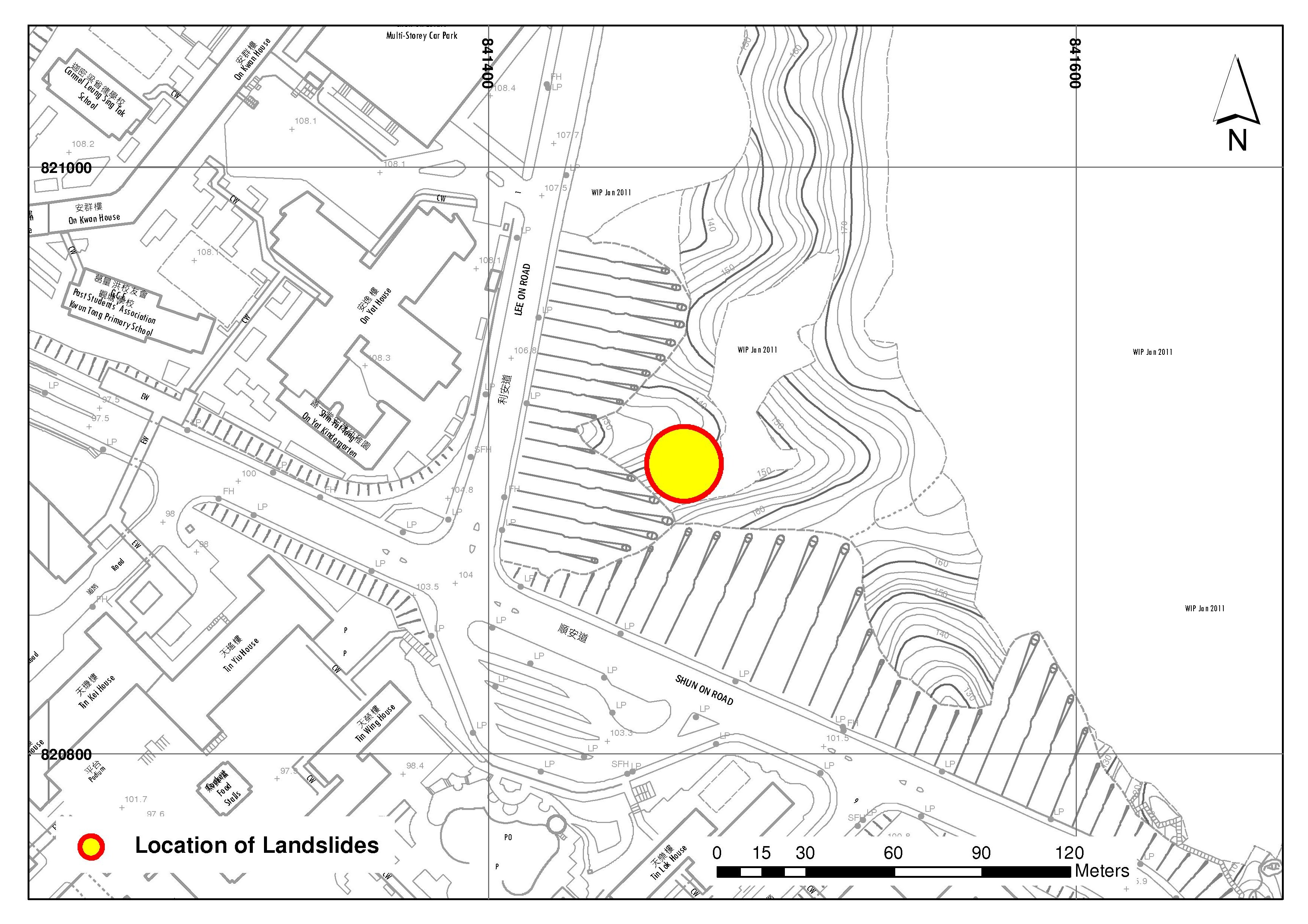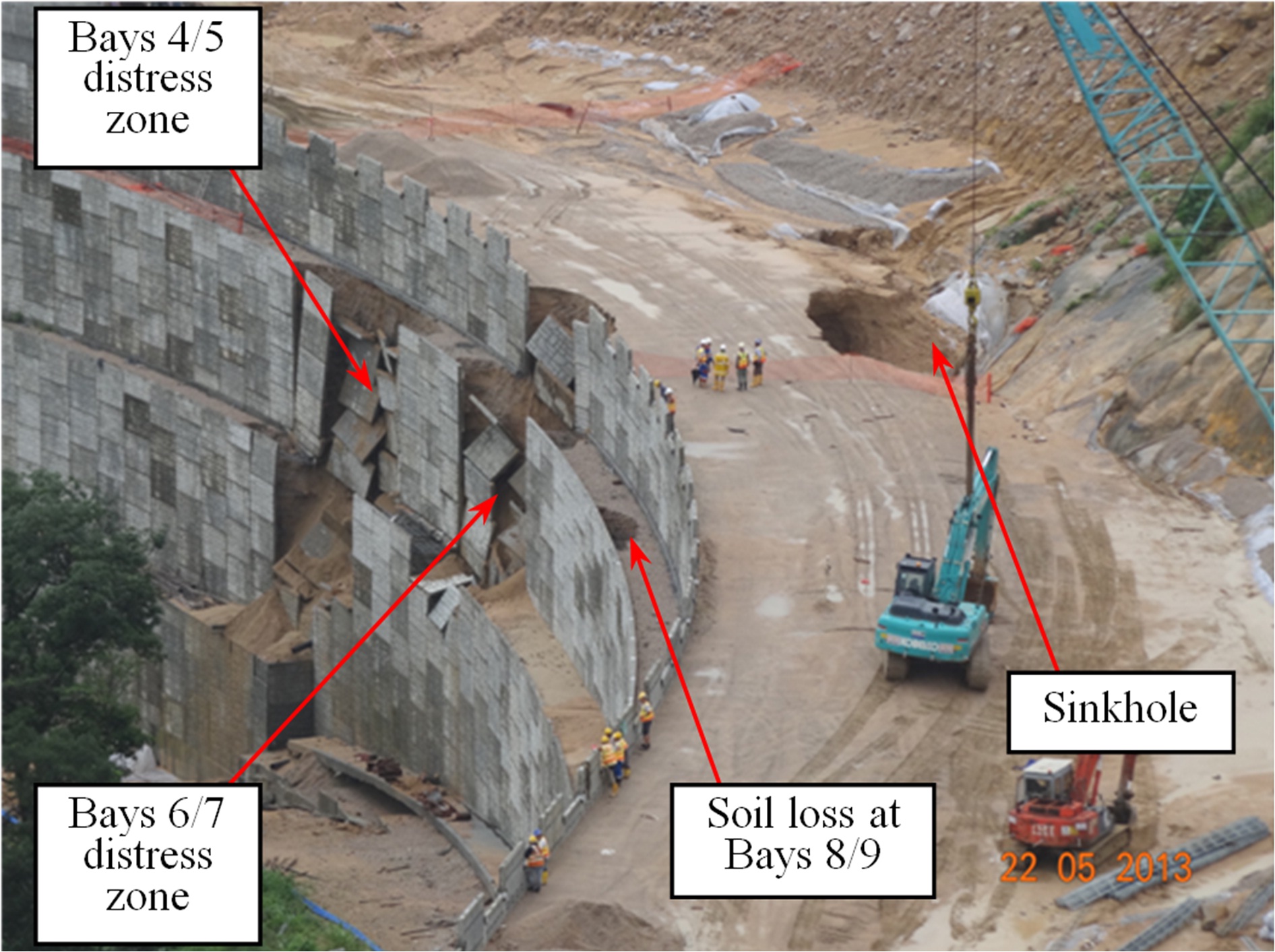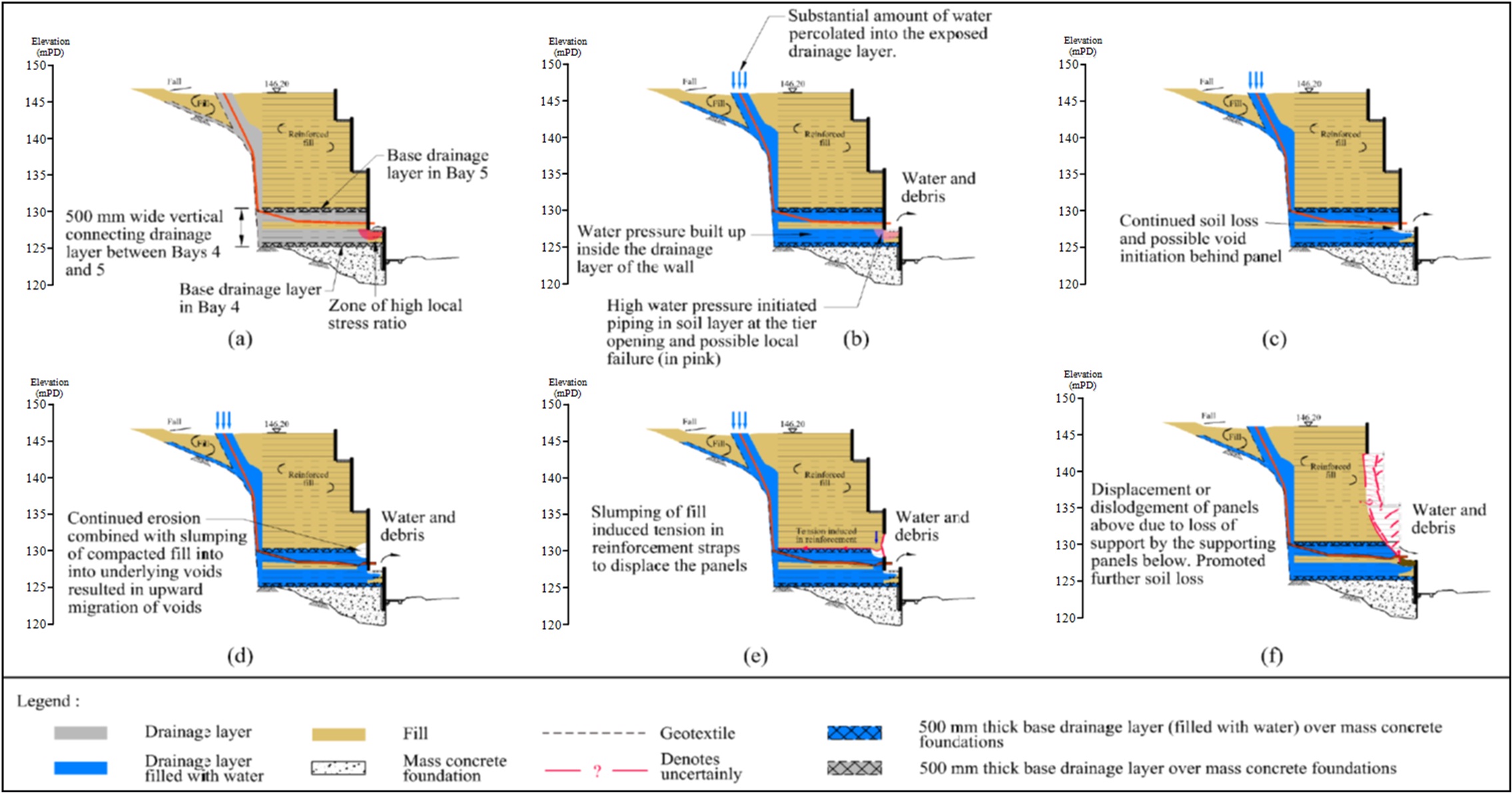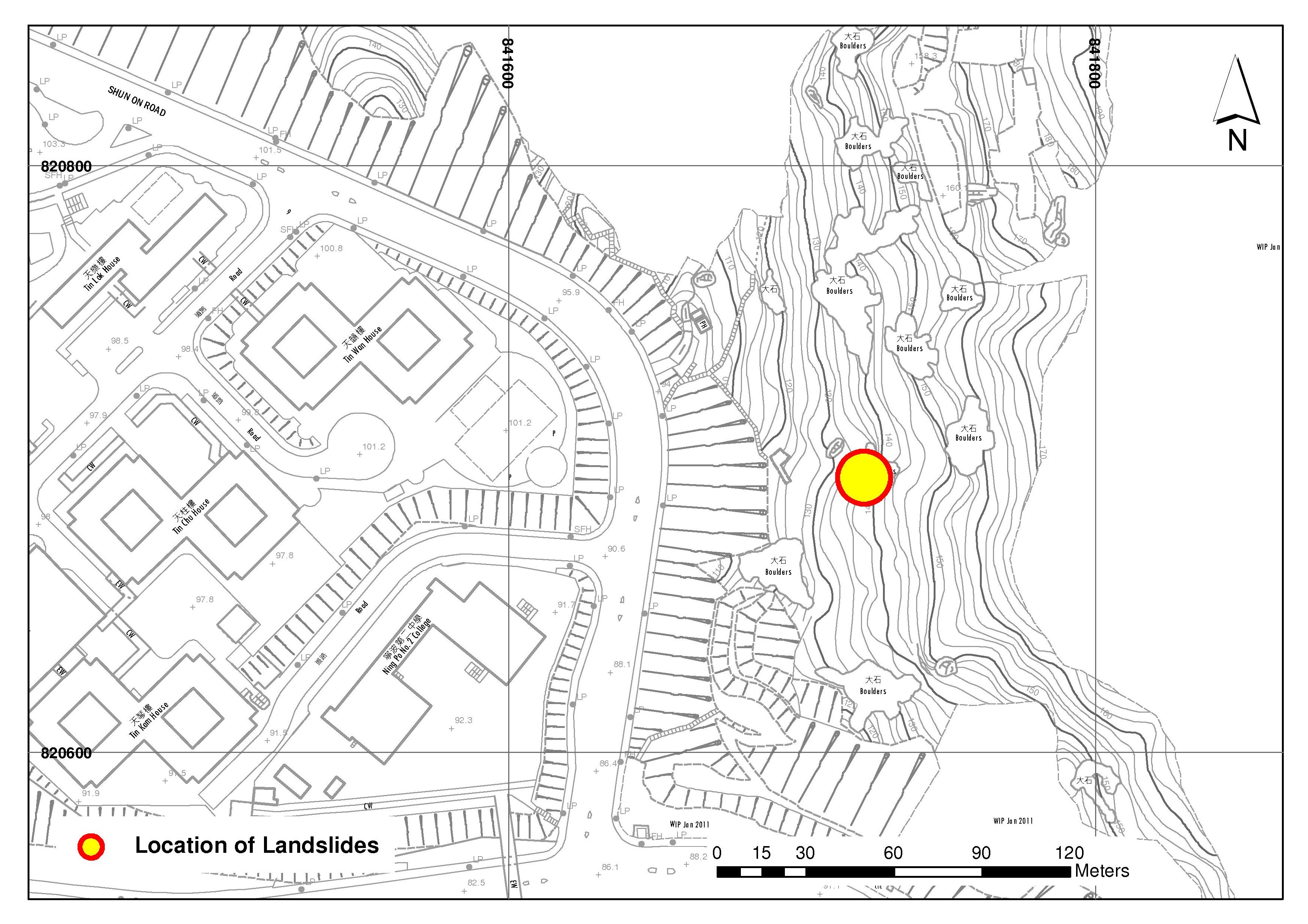Report on the 22 May 2013 Landslide on a Fill Slope at a Construction Site above Lee On Road, Sau Mau Ping
Basic Data
Material:
Soil fill & Grade 200 rockfill
Feature Affected:
Fill slope B6 (under construction)
Volume:
530 m3
Report Reference:
Report on the 22 May 2013 Landslide on a Fill Slope at a Construction Site above Lee On Road, Sau Mau Ping
Description
In the early morning of 22 May 2013, a landslide incident (Landslide Incident No. 2013/05/1293) occurred within the construction site for the Development at Anderson Road (DAR), above Lee On Road, Sau Mau Ping. The landslide occurred on fill slope B6 which was under construction at the time of the incident. The landslide involved a failure volume of 530 m3 with the majority of the failure debris deposited on Lee On Road.
Slope B6 is a 17 m high, 22° to 30° fill slope formed over a minor drainage line for the formation of a development platform at the crest. At the time of the incident, the filling works were completed but the slope cover and surface drainage measures were still to be installed.
The crest of Slope B6 was located at a topographical low point of an extensive catchment area comprising mainly the northwestern portion of the DAR site. Prior to the failure, a 1 m high temporary earth bund had been formed along the crest of Slope B6 to prevent overspill. A 225 mm diameter pipe was installed at the bund to discharge surface runoff accumulated at the crest of Slope B6 to the surface drainage system of an adjacent slope feature.
The landslide resulted from the site drainage provisions at the time of the failure not being efficient in conveying surface runoff off site and thereby being overwhelmed by the large volume of surface runoff arising from the intense rainfall. This led to ponding over an extensive area behind an earth bund at the crest of the slope. The earth bund, which was intended to prevent the overspilling of surface runoff onto the fill slope, was subsequently breached, discharging a large amount of surface water onto the fill slope below, resulting in the washout failure.
Observations
This incident highlights that overwhelming of temporary drainage provisions during site formation works in severe rainstorms can lead to landslides and serious consequences. Due attention should be given to ensuring adequate temporary drainage provisions and precautionary and mitigation measures to discharge the surface water and subsurface water safely during construction.
Report on the 22 May 2013 Distress at a Reinforced Earth Wall at a Construction Site above Shun On Road, Sau Mau Ping
Basic Data
Material:
Soil fill
Feature Affected:
Reinforced earth wall R22 (under construction)
Volume:
1,300 m3
Report Reference:
Report on the 22 May 2013 Distress at a Reinforced Earth Wall at a Construction Site above Shun On Road, Sau Mau Ping
Description
In the early morning of 22 May 2013, a distress incident (Incident No. 2013/06/1367) occurred on a reinforced earth wall (R22) within the construction site for the Development at Anderson Road (DAR), above Shun On Road, Sau Mau Ping. The incident involved dislodgement of 78 facing panels with a total soil loss of 1,300 m3. The distress occurred at three localised areas (viz. Bay 4 and 5, Bay 6 and 7 and Bay 8 and 9). A sinkhole was found at the backyard of Bay 6 and 7.
Wall R22 is 300 m long and up to 36.5 m high comprising four tiers upon completion. It comprises mass concrete foundations supporting a reinforced fill body. There is a horizontal drainage layer at the base of the fill body and vertical and inclined drainage layers at the rear of the fill body. The base horizontal drainage layers are connected at the interfaces of Bay 4 and 5, Bay 6 and 7, and Bay 8 and 9, which are all in close proximity to a tier opening where the soil has a low overburden pressure. At the time of the incident, the wall was under construction and the top end of the drainage layer at the backyard of the wall was exposed in Bay 4 to 7.
Wall R22 was located below some formed platforms within the site. The surface drainage provisions at the nearby platforms were not efficient in conveying surface runoff offsite and were overwhelmed by the large volume of surface water during the intense rainfall, resulting in overflow of surface water towards the backyard at Bays 4 to 7 of Wall R22 which was a topographic low point.
This led to excessive ingress of surface runoff to the wall via an exposed drainage layer at the backyard of the wall. High water pressure could build up at and in the vicinity of the drainage layer near the wall face. The high water pressure would have initiated piping at the tier openings at the three locations of the wall where the overburden pressure was low. This was followed by soil loss and resulted in panel dislodgement in two of the three locations.
Observations
This incident highlights that overwhelming of temporary drainage provisions during site formation works in severe rainstorms can lead to landslides and serious consequences. The integrity and stability of reinforced fill structures are vulnerable to excessive ingress of water and such structures require special attention in design and construction control.
